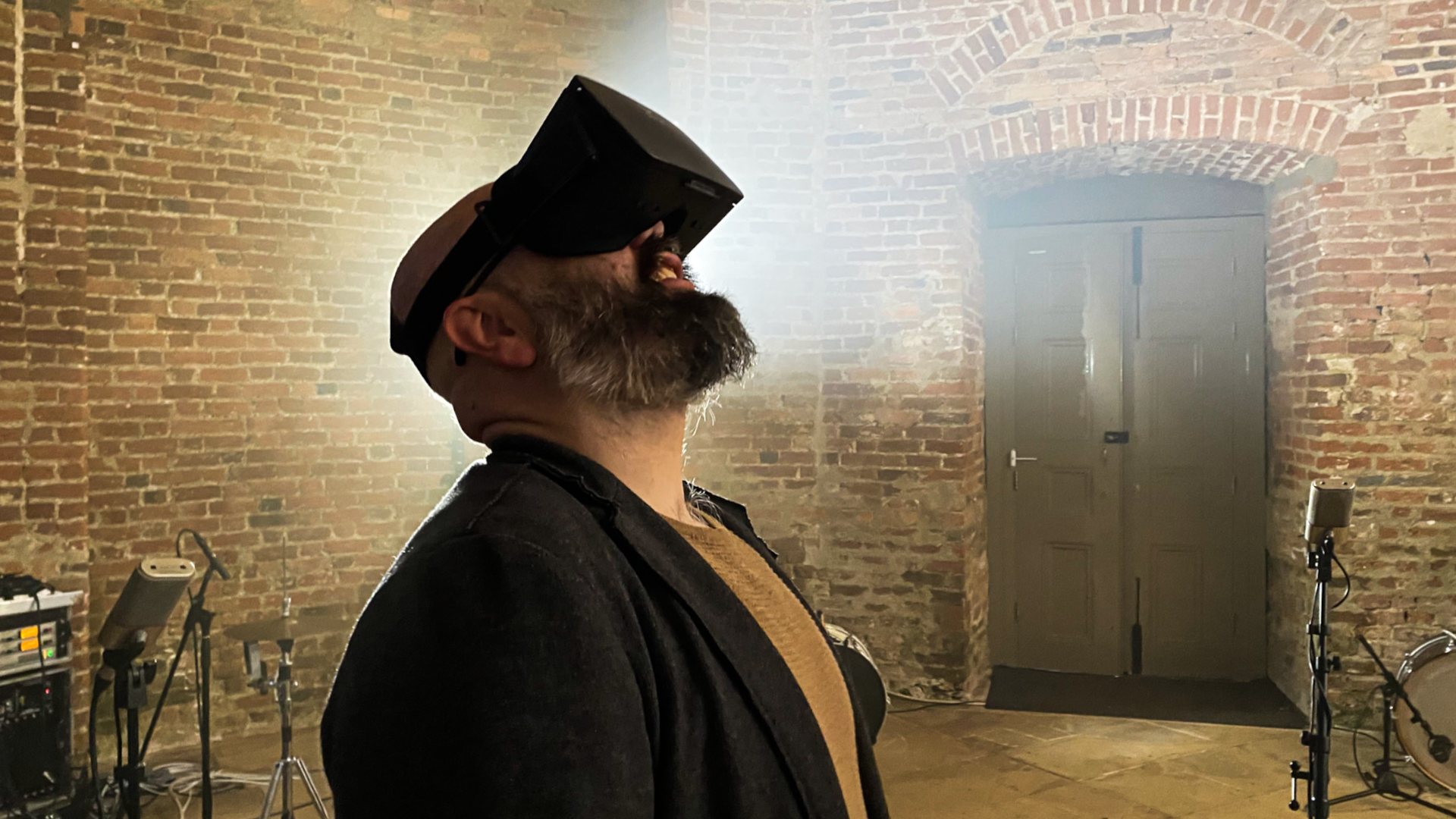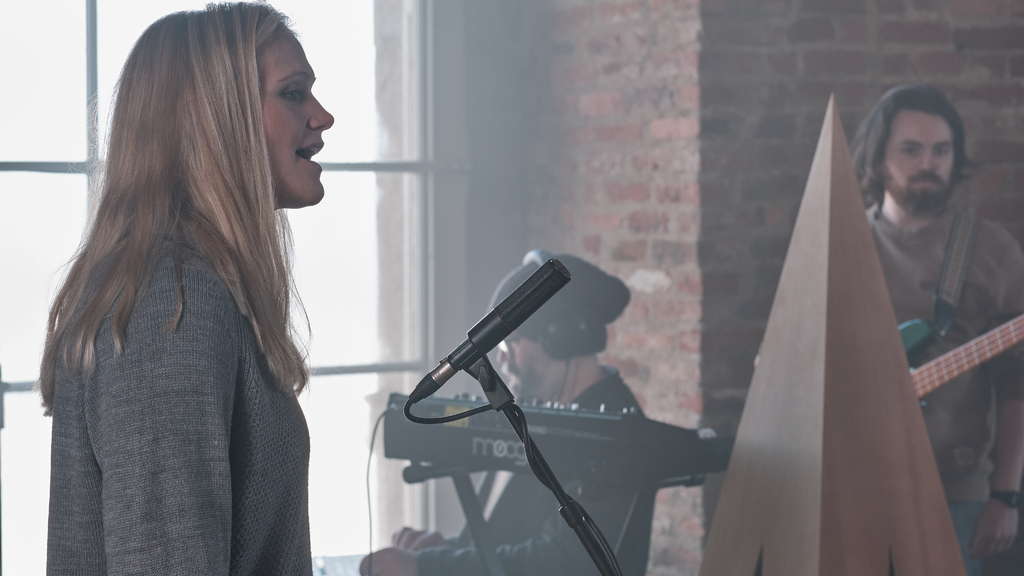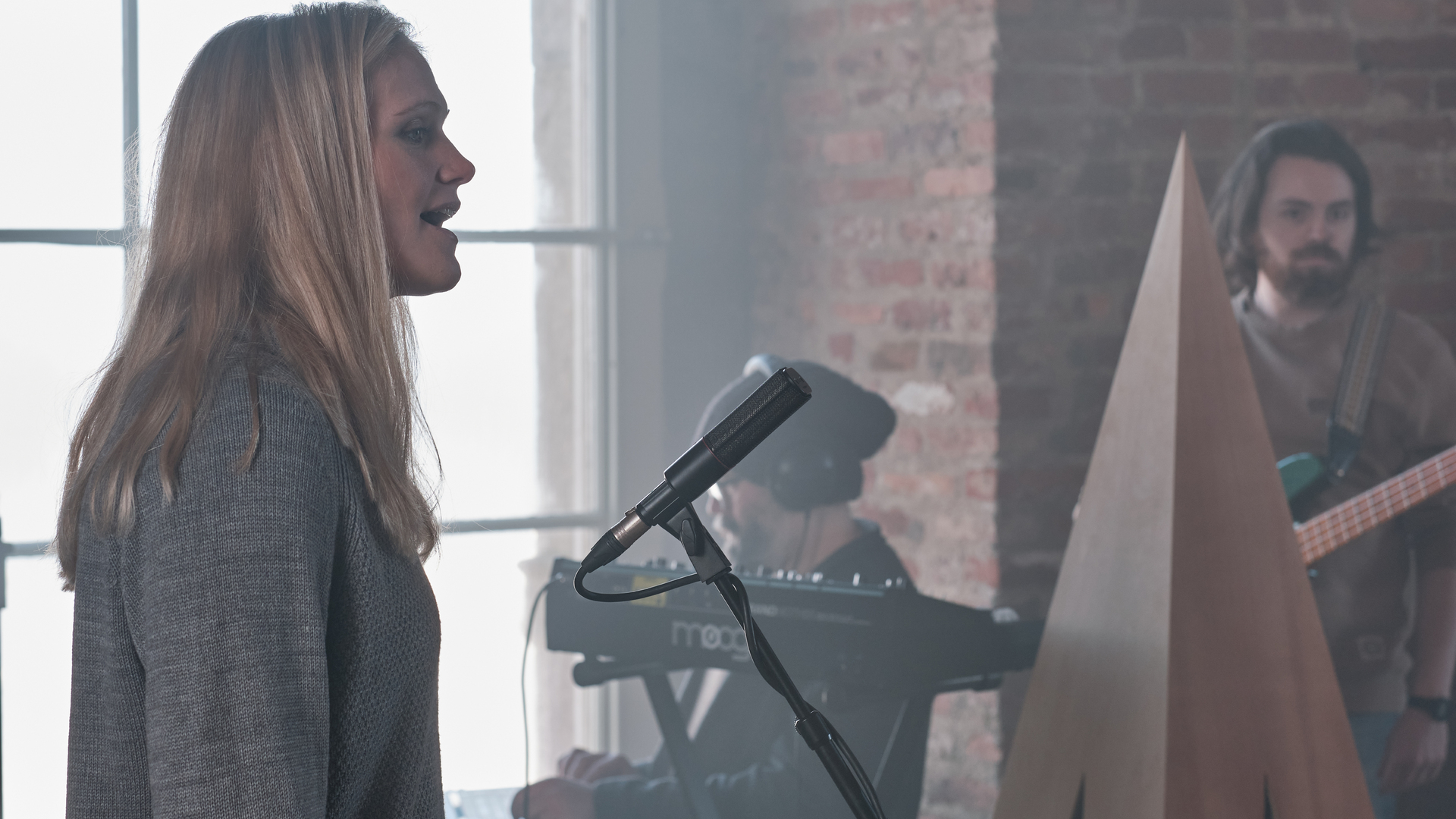
When flicking through the morning news one day back in June, we happened across an interesting story about a recording session on location on the Northern Irish coast – recorded and filmed for Virtual Reality playback. We also couldn’t help but notice the Austrian Audio OC818s and OC18s in the forefront of some of the images – which of course really piqued our interest.



Photo Credit: Ebony Alexander
So, we got in touch with Stu Reid, founder of Stunt Double Music Ltd. Stunt Double Music Ltd is a music production collective and label based up on the amazingly beautiful North Coast of Northern Ireland. We wanted to find out how these location recordings in immersive audio had come about, and what role the Austrian Audio microphones played in these sessions.
Originally, I’m from London, and I cut my teeth there in the late 90s and 00s working on a load of the street music that was starting up around that time (Big Brovaz, Romeo, Estelle), mainly out of The Dairy in Brixton. As that stuff became mainstream, it led to pop work and working on an album with Duran Duran.
I quickly realised that wasn’t my world and set about taking those production techniques to my first love of live bands. I did quite a bit of crossover work (Killa Kela, early Plan B) and did a bit of composing for TV and film (Grey’s Anatomy, The Children, Ghost Whisperer).



Photo Credit: Alan Hook
I moved to NI in 2010 when I got married. The music scene here is tiny compared to London but there’s so much talent! I’ve spent the time since indulging my experimental side and working with folks I’m into.
I did a degree in Electronic Engineering that focussed on Music Technology at the University of York - that’s where I first came across Soundfield microphones. The Uni was doing a whole ton of stuff on 3D sound recording and reproduction, and that started me on a path. To be honest, I never thought I’d make any money out of 3D 360 sound because it’s been so underground for so long, but now twenty years of side projects is coming in really useful!
I guess it’s also worth saying that I get a bit obsessed with acoustics, and as soon as music gear made it possible, I was out recording bands in all sorts of locations. I think music and the space it’s recorded in are really symbiotic, and studios are often designed to be more generic, so finding the perfect space for a specific project is sublime.
Yeah, it’s been a bit of a mad one. Andy Rogers is the main artist behind the Cave Sessions and he approached me years ago about recording some music in a cave. Northern Ireland has a bunch of these caves on the North Coast that have a history of smuggling and hiding runaways, and we wanted to capture that past but place it in the present and write songs in the forgotten keys of life – the subjects that we often don’t sing about like depression and suicide.



Photo Credit: Ebony Alexander
We always knew that the third and final Cave Sessions project we wanted to record would be about fragile hope after emerging from difficult times, but we’d never have guessed it would time so well with what ended up being COVID. We wanted somewhere really special to record this last instalment, and Mussenden Temple is about as iconic a building as you get in Northern Ireland, and it’s built directly above the first cave we explored for the previous projects.
We pulled in the rest of the collective to write the songs and perform the music, with particular input from Ferna and David Glendinning.
Technically, we wanted to push the boat out as well and capture the whole thing in 3D 360 degree VR and immersive audio. We were supported by a government grant, and linked up with Alan Hook who is a VR whizz up this way, and director Sam Kwan. We spent about 6 months doing the technical planning and had to solve a whole bunch of new problems, like how to get Soundfields and cameras in exactly the same space. We ended up making new musical instruments and rigging up drums and pianos with solenoids so they could be recorded separately from the vocals whilst still sounding identical.



Photo Credit: Alan Hook
We mainly used our trusted Soundfield ST250 to capture the space, recording it and a load of spot mics out in an OB truck direct to Pro Tools. Dave Walker, a great broadcast engineer from up this way looked after the tracking and we also had a whole load of his Sennheiser MKH40s around the place to capture extra ambience.
Although the final project looks like we recorded it all in one go, we captured everything in as isolated away as possible. The drums, synths, butchered solenoid piano and stringer bowing machine were all recorded separately. That meant that at mix we could balance up the amount the soundfield for each instrument contributed.



Photo Credit: Alan Hook
When dealing with synths on a project like this I think it’s really important to make sure they are in the same space as the live elements, so we recorded them through a La Voix Du Luthier Pyramide resonator. We also captured tons of impulse responses around the space.
I could write a whole ton on the mixing, but I won’t. Suffice to say, we used Izotope RX9 a lot to bring order to what we’d captured, and mixed it trying to combine a modern sound with enough of the real-life ambience as possible.
I’ve held back from mentioning the Austrian Audio mics until now, but I absolutely love them and they were everywhere on this project. The OC818 is a brilliant mic on location because I haven’t found anything that sounds bad with it, and that really matters when your monitoring isn’t ideal. We captured the lead vocals with OC818s and BVs with OC18s, but they also ended up being used for spot mics for all the drums and on the Pyramide, they are that versatile!



Photo Credit: Alan Hook
We’ve got a load of decent vocal mics in the studio and the OC818 holds up against them all in many situations. When it comes to location, the OC818 is my go-to vocal mic. It captures everything you need on pretty much any voice and takes EQ really well, but the dual output feature is a total gamechanger for me. It allows you to control the polar pattern after recording which means you have real control over the spill. The accompanying PolarDesigner plug-in has this great feature that works out the perfect polar pattern across 5 bands to balance good direct sound whilst rejecting spill.



Photo Credit: Alan Hook
Another really important thing is that the OC818s are really really good off axis, and again that matters in a location environment. Any spill sounds well-balanced and mixes well. In contrast, one of my favourite vocal mics sounds really coloured off axis, so it’s really unhelpful when mixing location material.



Photo Credit: Alan Hook
This is a bit of a Wild West right now, and there are a lot of different ideas about best practice. With VR, audio is really helpful for directing listeners around the sound stage, but it’s often distracting to translate this to music. We’ve mixed the audio in both static stereo (that stays the same in your ears however you turn) and immersive audio which locks the sounds to the picture. The immersive mix is delivered in first-order ambisonics which is the standard (for now!)



Photo Credit: Alan Hook
Although we didn’t use the OC818s for ambisonics on this project, I’ve used it elsewhere, and I’ve got to say, if I didn’t have a Soundfield, I’d be using this everywhere. I love the fact that the Austrian Audio folks are trying to push the boundaries and do new things rather than just relying on the fact that they build brilliant mics.
Using the dual diaphragm outputs and the AmbiCreator plugin, you can decode your recording for 1st Order Ambisonic formats. This can then be converted to binaural audio (using headphones) or 3D audio formats such as Dolby Atmos (using a speaker array) and allows you to recreate a sonic space with height and depth as well as left / right.
We started up a label this year, so a lot of our work is about getting that off the ground. We’re releasing the Cave Sessions with Google Cardboard goggles to try and get the experience to as many as possible, and we did some live performances of the material this summer, with more planned in the future. Following that, we’ve got Ferna’s debut album coming up, with a couple of VR music videos. We’re also planning to do some live immersive versions of some of those tracks alongside mixing the whole thing in Dolby Atmos. Hot on her heels, we have David Glendinning, a great singer-songwriter, who we’re launching as a new artist.
Alongside this, we still work with local and international clients regularly, and we’re exploring a few more immersive installation art projects, although it might be a while before we do anything on the scale of The Cave Sessions.
Links:
email: info@stuntdoublemusic.com
https://www.instagram.com/wearestuntdoublemusic/
https://www.instagram.com/andyjrogers/
https://www.instagram.com/fernasongs/
This new blog is presented by the team at Sound Technology Ltd, a leading distributor of musical instruments and pro audio equipment in the UK and ROI.